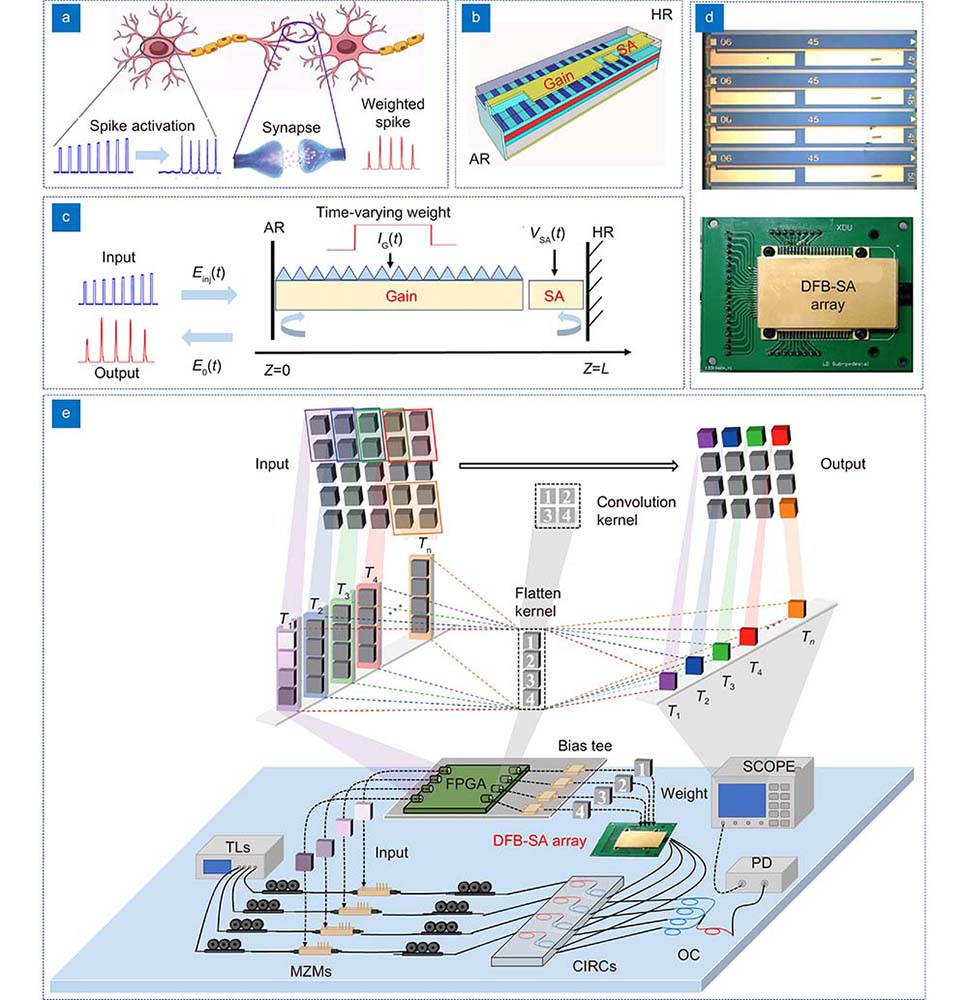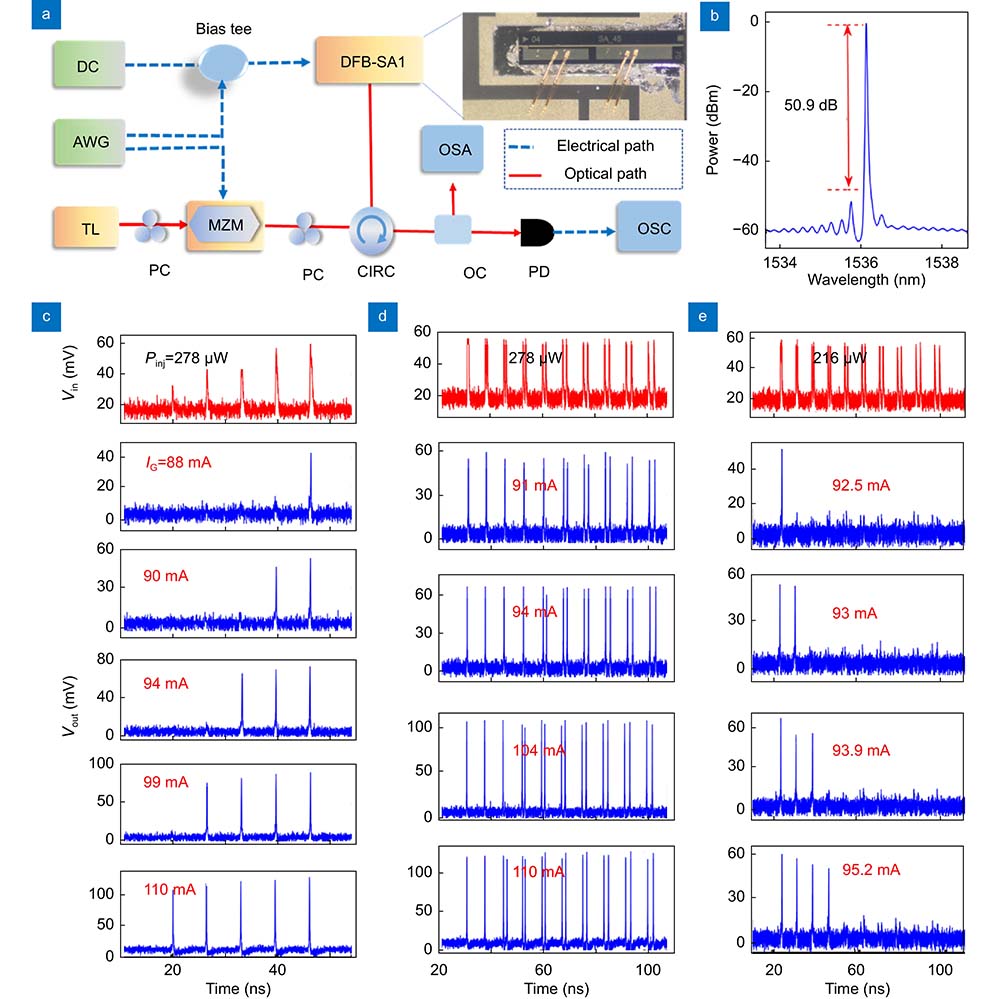Shuiying Xiang, Yuechun Shi, Yahui Zhang, Xingxing Guo, Ling Zheng, Yanan Han, Yuna Zhang, Ziwei Song, Dianzhuang Zheng, Tao Zhang, Hailing Wang, Xiaojun Zhu, Xiangfei Chen, Min Qiu, Yichen Shen, Wanhua Zheng, Yue Hao. Photonic integrated neuro-synaptic core for convolutional spiking neural network[J]. Opto-Electronic Advances, 2023, 6(11): 230140
Search by keywords or author
- Opto-Electronic Advances
- Vol. 6, Issue 11, 230140 (2023)

Fig. 1. The operation principle of photonic neuron-synaptic core. (a ) The schematic diagram of biological neuron. (b ) The structure and micrograph picture of the designed DFB-SA laser chip. (c ) The spike processing in a DFB-SA laser. (d ) The micrograph picture of the fabricated DFB-SA laser array chip and the compact packaged module. (e ) Spike-based matrix convolution based on the four-channel DFB-SA laser array.

Fig. 2. Experimental demonstration of intrinsic excitability plasticity in a single fabricated DFB-SA laser chip. (a ) Experimental setup of a DFB-SA laser for emulating the neuronal intrinsic plasticity and linear weighting. (b ) Optical spectrum of the free-running DFB-SA laser. (c ) Different excitability threshold, (d ) different refractory period, and (e ) different temporal integration behavior under different gain currents. VSA=−0.4V. The inset in (a) corresponds to the wire bonding of the fabricated DFB-SA laser chip.
Fig. 3. Continuously tunable weighted spike output for different static gain currents in a single fabricated DFB-SA laser chip. (a ) The weighted output of a single spike for different gain currents. (b ) The weighted spike trains for three representative gain current. (c ) The spike peak amplitude as a function of gain current.
Fig. 4. Experimental demonstration of simultaneous implementation of neuron excitability threshold and synaptic linear weighting functions in a single DFB-SA laser. (a ) Corresponds to static gain current at different level. (b ) and (c ) Correspond to step-wise and continuously-varying gain current, respectively. In (b) IG0=80 mA, IG = IM+ IG0.
Fig. 5. Spike-based neural computation in a photonic SNN consisting of two PRE DFB-SA lasers and one POST FP-SA laser. (a ) Experimental setup of a full-functional prototypical photonic neuromorphic system. (b ) Optical spectra of the DFB-SA lasers and FP-SA laser. (c ) Spike-based AND. (d ) Spike-based OR. With IG=100.1 mA and VSA=−0.1 V for the DFB-SA1 laser; IG=102.1 mA and VSA=−0.27 V for the DFB-SA2 laser; IG=56.9 mA and VSA=−0.25 V for the FP-SA laser.
Fig. 6. Experimental results of matrix multiplication with a four-channel DFB-SA laser array. (a ) Schematic diagram of the parallel linear weight with the DFB-SA laser array. (b ) Network structure for spiking CNN. (c ) The temporal output of the convolved results for 16 convolutional kernels for three input samples, the right column represents the enlargement of the region denoted by the dashed lines. (d –f ) Represent the training accuracy, confusion matrix for software inference and hardware-software inference.

Set citation alerts for the article
Please enter your email address



